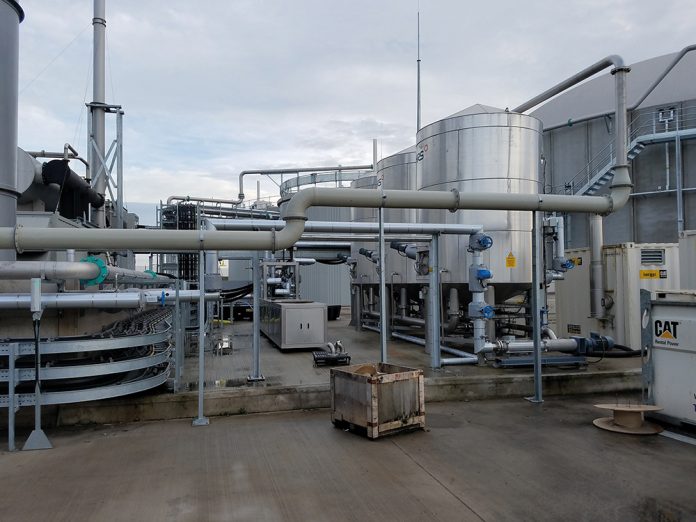By Steven Cotterill, 3D CAD Designer,
Embarking on a new wastewater anaerobic digestion project can be daunting, but a comprehensive design phase to determine the most successful layout for your site can reduce the risk. Here are Anaergia’s four design cornerstones to set your sewage AD project on the path to success…
1. Follow the process flow
Process dictates positioning; design the layout of your plant to follow the flow of material. This will enable feedstock to be conveyed over the shortest distance, reducing the likelihood of downtime from blockages and lessening equipment wear and tear.
This principle can be applied across the whole site, as a smaller footprint means less land, less concrete and less labour will be required to build the plant. However, make sure to factor enough space for landscaping, planting and shielding, often required by planners.
2. Enable easy access to equipment
Ensure that forklifts, small vehicles or lifting machinery can easily access key equipment such as tanks, pumps and mixers. This will enable service engineers to quickly remove, repair and replace parts, reducing downtime.
Ensure that high level equipment can be easily reached, with a sufficient platform for working, or that there is room for a cherry picker or scissor lift. If the plant has a flexible membrane roof, accommodate access for cranes, as the lifetime of the membrane is shorter than the subsidised life of UK AD plants.
Finally, avoid siting equipment that will need regular maintenance within a DSEAR (Dangerous Substances and Explosive Atmospheres Regulations) zone, to reduce the time that operatives spend in this high-risk area.
3. Protect your people
The potential for explosive atmosphere increases near to pressure relief valves so avoid locating electrical equipment or instrumentation within the biogas release zone.
Establish clear personnel routes throughout the facility. Inside the reception building, provide designated walkways, as well as barriers and/or handrails to protect people from tipping vehicles and bucket loaders. Arrange process pumps and pipework away from walkways to avoid trip hazards and consider placing pipe runs and electric cables above head height on support frames to keep floors clear.
Take into account the maximum number of personnel that could be on site and ensure adequate facilities are available, including good washing facilities and toilets in both clean and dirty areas. Showers, changing rooms, laundry rooms and a sufficient-sized mess room for operatives and contractors are also essential.
4. Take care of transport
Consider vehicle movements in and out of the site, as well as within the site boundary. A traffic management plan is a good starting point, and a traffic light system may also be required.
Locate the weighbridge close to the operations office to enable efficient communication between drivers and site personnel. If the weighbridge needs to be located further away, then install a serviceable automated ticketing system.
Make certain there is enough vehicle turning and reversing space. If delivery vehicles are tipping into a reception building, it should be high enough to accommodate the bulk trailer at full tipping height.
Include sufficient parking spaces to accommodate all staff and contractors and situate car parks close to the reception. This will ensure that new personnel can safely get to reception prior to signing in and being inducted.
Finally, ensure that the bund size is adequate (110% of the largest vessel or 25% of total tank volume, whichever is higher) and that vehicles can easily access it, whether via a ramp or flood gate.
To conclude, a comprehensive site design coupled with strong 2D and 3D concept artworks can help developers to visualise their proposed sewage AD plant and correct any potential layout issues before building works commence, saving both time and money. For expert AD design and layout advice, contact ukoffice@anaergia.com



